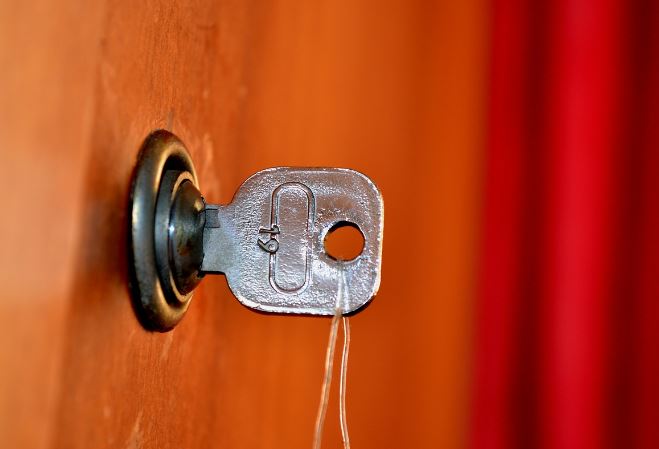 Lock problems often manifest themselves during the cold months of the year. When temperatures fall below freezing, the door frame tends to contract. This causes a poor fit between the lock and the door itself.
Lock problems often manifest themselves during the cold months of the year. When temperatures fall below freezing, the door frame tends to contract. This causes a poor fit between the lock and the door itself.
This effect is more common in the following situations:
For wooden exterior doors and/or door frames, which are affected by the rising humidity levels.
For door frames made of wood which tends to contract in colder temperatures.
You may find that it’s difficult to turn the key in a deadbolt when locking or unlocking exterior doors. For a quick fix, try pulling in on the door handle from the outside to re-center the lock within the door frame. However, this shouldn’t be considered a permanent solution, as it will likely get worse over time and eventually make it impossible to lock or unlock the door.
A Note About Car Locks
Cold temperatures can be a real pain when they affect car door locks. Moisture inside the lock can freeze if temperatures drop low enough. This renders it impossible for a key to turn the lock or even for a remote door opener to function properly.
In most situations, the best way to fix the problem is to carefully heat up the car’s key (using an open flame) before inserting it into the lock. If your car has a remote-start function, try heating up the car by letting the engine run for a few minutes. The locks will eventually unfreeze.
Way to Prevent Lock Problems
Fortunately, there are some preventative measures you can take to avoid these issues.
Whenever you have new locks installed, be sure you’re working with an experienced locksmith. These professionals will ensure that the lock is properly fitted to the door frame, thus reducing problems with the changing weather.
Consider replacing wooden exterior doors and frames with a more durable option that is more resistant to extreme temperatures. There are lots of options available, including aluminum, fiberglass, and steel.
Take the time to maintain locks by oiling them regularly. This will make it easier to turn—even when the weather changes. To lubricate properly, you’ll need to take the lock apart first.
Keep the lock dry. Ensure that overhangs, eaves, and gutters are sufficient to keep rain and snow away from the door.






